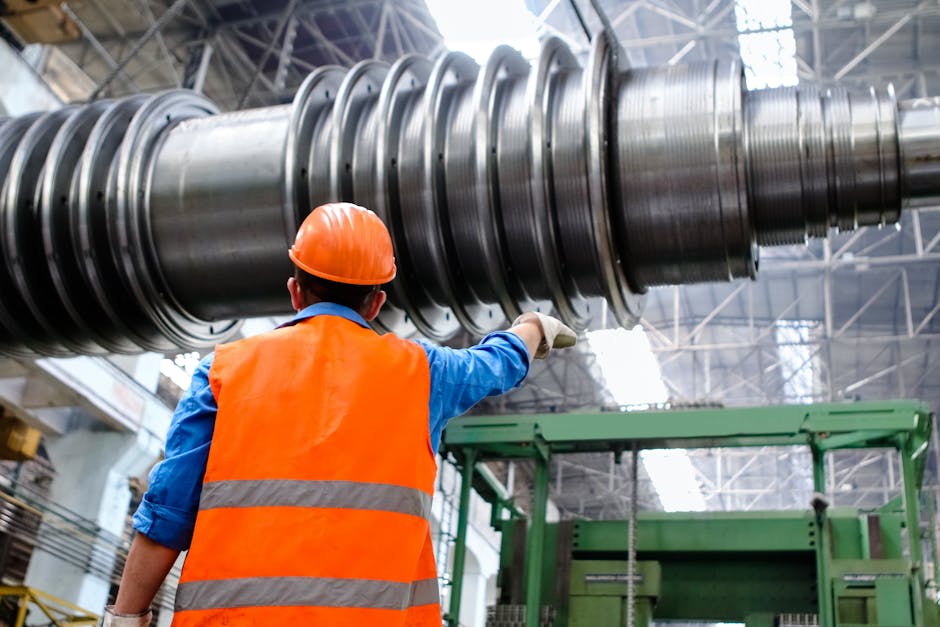Additive Manufacturing With Metals: Techniques, Challenges, and Opportunities
You’re about to explore the cutting-edge world of additive manufacturing with metals, where techniques like Selective Laser Sintering (SLS), Selective Laser Melting (SLM), and Electron Beam Melting (EBM) enable the production of complex components with high accuracy and precision. From aerospace to healthcare, these technologies are transforming industries with intricate geometries, high thermal conductivity, and customised microstructures. However, challenges persist, including high equipment costs, limited material options, and inconsistent part quality. As you venture further, you’ll uncover the vast potential of metal additive manufacturing and the opportunities that lie ahead in this rapidly evolving landscape.
Key Takeaways
• Metal 3D printing techniques like SLS, SLM, and EBM enable the production of complex metal components with high accuracy and precision.• Challenges in metal additive manufacturing include high equipment costs, limited material options, regulatory hurdles, and inconsistent part quality.• Metal powder bed fusion offers benefits like high-detail resolution, reduced material waste, increased production speed, and improved part quality.• Industries like aerospace, automotive, healthcare, and energy are adopting metal additive manufacturing to streamline supply chains and reduce lead times.• The future of metal 3D printing promises to revolutionise industries, with cost savings and improved supply chain management being key benefits.
Metal 3D Printing Techniques

You can employ several metal 3D printing techniques, including selective laser sintering (SLS), selective laser melting (SLM), and electron beam melting (EBM), to produce complex metal components with high accuracy and precision.
These techniques allow for the creation of intricate geometries and customised metal microstructures, which are critical in achieving ideal thermal properties.
When using SLS, you can produce parts with high density and minimal porosity, making it ideal for applications requiring high thermal conductivity.
SLM, on the other hand, enables the creation of parts with complex internal structures, allowing for tailored thermal properties.
EBM, which uses an electron beam to melt metal powders, offers high precision and accuracy, making it suitable for producing small, intricate components with specific thermal properties.
Challenges in Metal Additive Manufacturing

Several challenges hinder the widespread adoption of metal additive manufacturing, including the high cost of equipment, limited material options, and inconsistent part quality. As you delve into the world of metal 3D printing, you’ll encounter significant cost concerns. The high upfront investment in equipment and maintenance can be daunting, making it difficult for small and medium-sized enterprises to enter the market.
| Challenge | Description | Impact |
|---|---|---|
| High equipment cost | Initial investment in metal 3D printing machines | Prohibitive for SMEs |
| Limited material options | Restricted range of printable metals | Limited design flexibility |
| Regulatory hurdles | Lack of standardisation and certification | Slows industry growth |
Additionally, regulatory hurdles pose a significant obstacle. The lack of standardisation and certification frameworks hinders the widespread adoption of metal additive manufacturing. You’ll need to navigate a complex landscape of regulations, which can be time-consuming and costly. Furthermore, the limited availability of printable metals restricts design flexibility, making it challenging to create complex geometries and customised products. As you explore the world of metal additive manufacturing, it’s essential to be aware of these challenges and their implications on your business or project.
Selective Laser Sintering Advantages

As you explore the benefits of selective laser sintering, you’ll discover several advantages that make it an attractive option for metal additive manufacturing.
For starters, this process enables you to achieve high precision capabilities, allowing for intricate designs and complex geometries.
Additionally, you’ll appreciate the rapid prototyping ability and minimal material waste that come with using selective laser sintering.
High Precision Capability
With precision being a critical factor in additive manufacturing, Selective Laser Sintering (SLS) offers unparallelled high precision capability, enabling the creation of complex geometries with accuracy down to 0.01 mm.
As you explore the capabilities of SLS, you’ll find that it allows for microscopic accuracy, making it an ideal choice for applications where precision is paramount.
One of the key advantages of SLS is its ability to produce parts with intricate geometric complexity. This is particularly useful in industries such as aerospace, automotive, and healthcare, where complex components require high precision and accuracy.
With SLS, you can create parts with internal structures, lattice structures, and other complex geometries that would be impossible to produce using traditional manufacturing methods.
The high precision capability of SLS also enables the creation of parts with extremely small features, making it an ideal choice for applications such as micro-electromechanical systems (MEMS) and microfluidics.
Rapid Prototyping Ability
By leveraging Selective Laser Sintering‘s rapid prototyping ability, you can quickly transform your design concepts into functional parts, accelerating the product development process and reducing time-to-market.
This capability enables you to rapidly test and validate your designs, allowing for swift iteration and refinement. With SLS, you can produce complex geometries and functional prototypes with high accuracy, which is essential for evaluating performance and identifying potential design flaws.
The rapid prototyping ability of SLS also enables design flexibility, as you can easily modify your designs and test new iterations without incurring significant tooling costs or lead times.
This flexibility allows you to explore different design options and optimise your product’s performance, reducing the risk of costly redesigns later in the development process. Additionally, the iteration speed enabled by SLS rapid prototyping enables you to quickly respond to changing design requirements, ensuring that your product stays on track and meets its performance targets.
Low Material Waste
How much material waste can you eliminate from your production process? With additive manufacturing, the answer is substantial.
Unlike traditional subtractive methods, additive manufacturing builds parts layer by layer, reducing the amount of waste material generated. This approach enables sustainable production, minimising the environmental impact of your operations.
In selective laser sintering, for instance, the process only uses the exact amount of material needed to create the part.
This results in minimal waste, reducing the environmental burden of production. You can drastically decrease the amount of scrap material sent to landfills, conserving natural resources and reducing your carbon footprint.
By adopting additive manufacturing, you’ll not only reduce waste but also minimise the energy required for production. This leads to a more environmentally friendly production process, alining with the principles of sustainable development.
Electron Beam Melting Applications

Electron beam melting (EBM) technology has been widely adopted in various industries, including aerospace, automotive, and healthcare, due to its ability to produce complex geometries and internal structures with high precision and accuracy. As you explore the applications of EBM, you’ll discover its potential to transform industries.
| Industry | Application |
|---|---|
| Aerospace | Production of lightweight, complex components |
| Automotive | Manufacturing of customised car parts |
| Healthcare | Creation of medical implants with customised structures |
| Energy | Fabrication of complex components for energy storage |
| Aerospace | Production of satellite components with high precision |
EBM’s ability to produce complex geometries and internal structures with high precision and accuracy makes it an attractive option for various industries. In the medical field, EBM enables the production of customised implants, such as hip and knee replacements, that can be tailored to individual patients’ needs. This electron beam customisation allows for a more precise fit, reducing the risk of complications and improving patient outcomes. Additionally, EBM enables the production of medical implants with complex internal structures, such as porous implants that promote bone growth. With its ability to produce complex components with high precision and accuracy, EBM is poised to revolutionise various industries.
Metal Powder Bed Fusion Benefits

When you utilise metal powder bed fusion, you’ll reap several benefits that enhance your additive manufacturing process.
You’ll achieve high-detail resolution capability, allowing for intricate geometries and complex structures.
Additionally, you’ll reduce material waste and increase production speed, making this process a cost-effective and efficient option.
High-Detail Resolution Capability
With metal powder bed fusion, you can achieve exceptionally high detail resolution, enabling the creation of intricate geometries and complex internal structures that would be difficult or impossible to produce with traditional manufacturing methods.
This high level of detail resolution allows for the creation of parts with complex internal structures, such as lattice structures or hollow parts, which can provide significant weight reduction and improved performance.
Additionally, metal powder bed fusion enables the production of parts with high material complexity, such as parts with varying densities or material properties. This is particularly useful for applications where specific material properties are required, such as in aerospace or biomedical industries.
In addition, the high detail resolution of metal powder bed fusion also results in excellent surface finish, reducing the need for post-processing operations and improving the overall quality of the final product.
Reduced Material Waste
By leveraging metal powder bed fusion, you can substantially minimise material waste, as the process only uses the exact amount of metal powder required to build the part, reducing the environmental impact and cost associated with traditional manufacturing methods. This approach eliminates the need for machining and cutting, which often generates significant amounts of scrap material. As a result, you can achieve significant reductions in material waste, contributing to environmental sustainability.
| Traditional Manufacturing | Metal Powder Bed Fusion |
|---|---|
| High material waste generation | Minimal material waste generation |
| Inefficient material usage | Efficient material usage |
| High environmental impact | Low environmental impact |
| Inefficient supply chain | Supply chain efficiency |
Increased Production Speed
You can substantially accelerate your production timeline through metal powder bed fusion, which empowers you to build complex geometries and parts in a single process, eliminating the need for assembly and reducing overall production time.
This streamlined process enables you to produce parts at a faster rate, allowing you to respond quickly to changing market demands and stay ahead of the competition.
With metal powder bed fusion, you can reduce production time by minimising the need for tooling, moulds, and other manufacturing infrastructure.
This, in turn, leads to significant cost savings, as you can bypass traditional manufacturing processes and their associated expenses.
Additionally, the reduced production time enables you to shorten your supply chain, reducing logistical complexities and costs.
Industrial Adoption of Metal AM

As metal additive manufacturing (AM) shifts from prototyping to production, industries increasingly adopt this technology to streamline their supply chains and reduce lead times. You’re likely to benefit from the advantages of metal AM, including cost savings and improved supply chain management. By adopting metal AM, you can reduce material waste, minimise inventory, and produce complex parts on demand. This can lead to significant cost savings and improved profitability.
Many industries, including aerospace, automotive, and healthcare, have already adopted metal AM to improve their manufacturing processes. You can follow their lead and explore how metal AM can benefit your organisation.
Here’s a comparison of traditional manufacturing and metal AM:
| Traditional Manufacturing | Metal Additive Manufacturing || High material waste | Minimal material waste || Long lead times | On-demand production || Limited design complexity | Complex geometries possible || High inventory costs | Minimal inventory costs || Limited customisation | Customisable products |
Future of Metal 3D Printing

Metal additive manufacturing’s rapid evolution is propelling it toward unprecedented advancements, promising to revolutionise industries further.
As you explore the future of metal 3D printing, you’ll discover that scalability is key to widespread adoption. Currently, metal scalability is limited by factors such as build size, material properties, and post-processing requirements. However, innovators are working to overcome these hurdles, developing novel techniques and machinery to increase production capacity and efficiency.
Industry disruptors, such as start-ups and established companies, are driving this progress. They’re investing in R&D, pushing the boundaries of metal AM‘s capabilities, and creating new business models.
You’ll see novel applications emerging, such as large-scale industrial parts, complex aerospace components, and customised medical implants. As metal AM becomes more accessible and cost-effective, you can expect to see widespread adoption across industries, from automotive to energy.
The future of metal 3D printing is poised to be transformative, with potential to disrupt traditional manufacturing processes and create new opportunities.
As you explore this landscape, you’ll uncover innovations in materials science, machine learning, and artificial intelligence, all converging to propel metal AM forward.
Get ready to witness unprecedented growth, as metal additive manufacturing reshapes the industrial landscape and redefines what’s possible.
Conclusion
As you navigate the complex landscape of metal additive manufacturing, remember that overcoming challenges like porosity and material limitations will reveal unprecedented design freedom and part performance.
While industrial adoption is on the rise, it’s essential to address concerns about scalability and cost-effectiveness.
By doing so, you’ll harness the full potential of metal 3D printing, transforming industries from aerospace to healthcare.
Contact us to discuss our services now!
